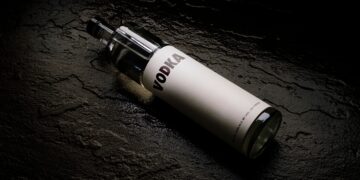The more we hear about what’s going on in our natural world, the less encouraging the news sounds.
As The Guardian reported , the Arctic Ocean has declined in reach by 40% and volume by 70% since 1979. The loss continues at about 11,023 tons per second.
While this goes on, the rash of polluted water sources, climate change, and increased demand will likely leave about 5 billion people to experience water shortages by 2050.
Although reversing these alarming trends takes more than just one person can handle, one firm in the United Arab Emirates has plans to alleviate the effects of one of these problems with the other.
Abdulla Alshehi is the founder of a UAE-based company known as National Advisor Bureau.

The upcoming global water crisis, as well as the current one that according to NBC News , leaves 1.2 billion people without access to clean water hits particularly close to home for him.
After all, the UAE is experiencing some serious water shortages of its own.
And so he and some private investors have put together a $60 million plan to do something about it.

As he told NBC News, they’re going to use satellites to track down a usable iceberg, grab it with a series of nets and chains, and get a small fleet of boats to tow it 4,000 miles.
Depending on where the iceberg originally was, the destination will be either Australia or South Africa.

Should this project go according to plan, those in charge will sell the iceberg to the relevant government and set up a second voyage to bring a separate iceberg to the United Arab Emirates.
Although the distribution process from there remains a secret, the plan is to break up the icebergs while they’re still off shore before loading the ice onto tankers and taking it into each country’s borders.
Naturally, the sheer size of the icebergs Alshehi has his eye on for this will make the job intensely difficult.

Specifically, we’re talking about 2,000 foot by 7,000 foot icebergs that weigh approximately 100 million tons, so the plans involve finding ocean currents that could make the voyages faster.
Even with those in place, there’s a chance that the fleet can only end up towing the icebergs at 1.5 miles per hour, which means it would take one 11 months to reach the UAE.
The length of this journey and the inevitable melting along the way leaves experts concerned that the icebergs will fall apart entirely.

As Nick Holschuh of the University of Washington told NBC News, “Not only do they have to deal with losses of ice due to direct melting, they have to prevent the mechanical breakup of the iceberg as surface melt accumulates.
“Any pre-existing weaknesses will affect the iceberg’s resilience to warm ocean water, warm air and stresses induced by towing.”
For his part, Alshehi said he is prepared for the melting and will consider the project worth doing if even a third of the iceberg melts.

At least, that’s how much estimates from within his firm expect the iceberg to melt and if they’re correct, each iceberg will still be able to provide between 26.4 and 52.8 billion gallons of fresh water.
This would be enough to meet the needs of 1 million people for five years.
Alshehi also doesn’t see any environmental concerns resulting from his plan.

This is because the icebergs he’s hoping to earmark for the project have not only broken from the Antarctic Ice Sheet, but aren’t floating anywhere near it.
Alshehi and Holschuh agree on this point, as the latter said that icebergs breaking from the ice sheet are a natural consequence of ice flow.

Furthermore, he said, “By the time they’re fully separated from the grounding ice, they have limited impact on the rest of the ice-ocean system. So for the volumes of ice we’re talking about, dragging away these icebergs would result in almost no changes.”
h/t: NBC News

















































